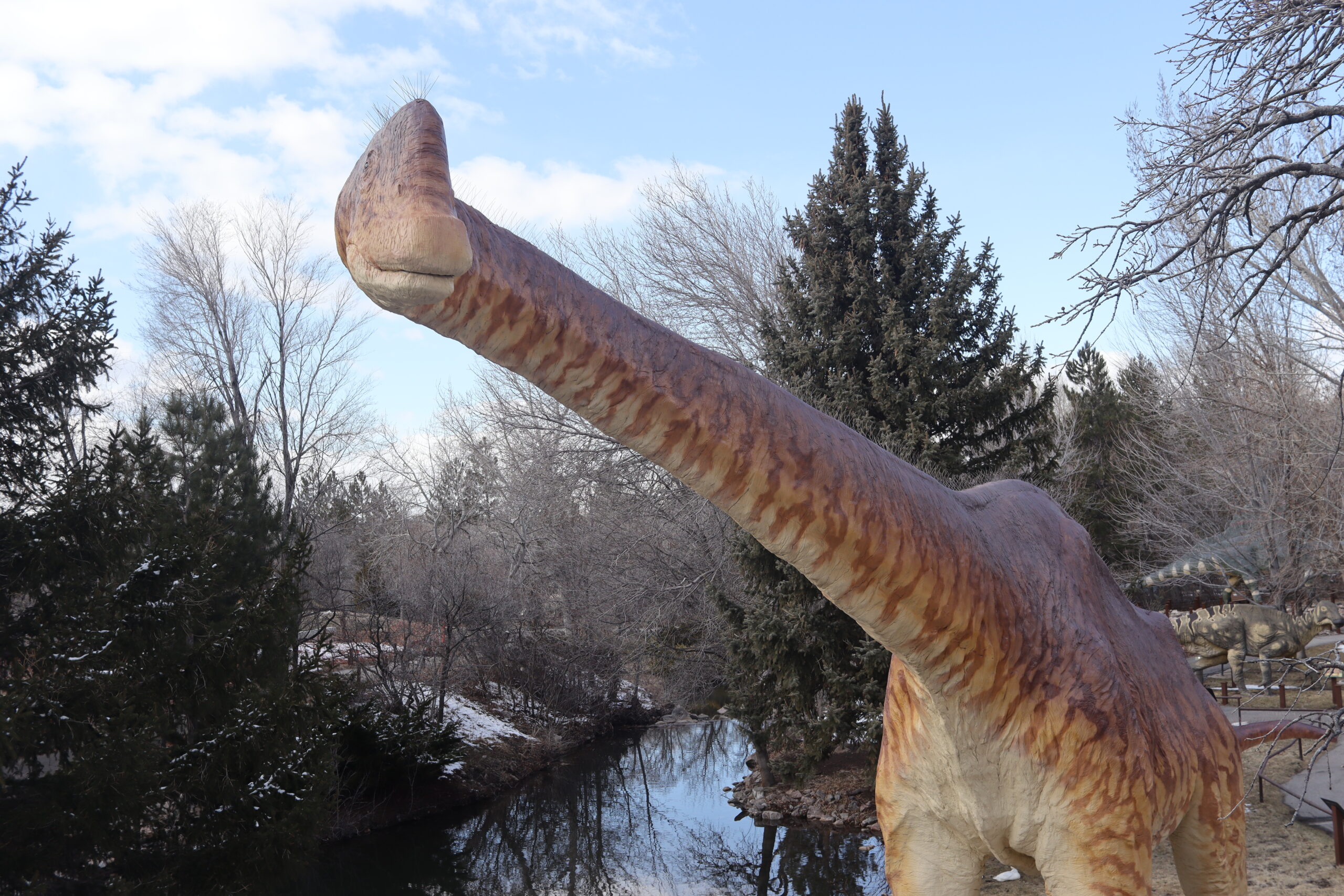
Profile
Brachiosaurus Wasn’t Fuzzy
True to Life?
Species: altithorax
Range: Late Jurassic (Tithonian, 150-145 MYA) from Utah, Wyoming, Colorado, and Oklahoma
Size estimate: 85 ft length, 62 tons
Discovery: Elmer Riggs, 1903
Classification: dinosauria, saurischia, sauropoda, macronaria, brachiosauridae
You might have noticed the spikes lining the back and hips of this Brachiosaurus sculpture. To a degree, they might resemble pictures you may have seen on the internet which add fuzz at random to dinosaurs. That’s not what these spikes represent. The only skin impressions we have for Brachiosaurus come from footprints, and they suggest it had small, spiky scales on its feet, sort of like mini soccer cleats. Scale impressions from other sauropods usually preserve a mosaic of large hexagonal scales. Diplodocus May have grown a loosely Iguana-like fringe of scales, probably along its dorsal ridge. Nothing supports fuzz on sauropods.
What are these spikes doing here? They play only a practical role. Seagulls and other birds were fond of perching on this Brachiosaurus sculpture’s back. When we refreshed the paint job, we added the spikes to prevent them from perching up there and covering the new paint up with a “paint job” of their own. The paint on the fuzz is intended to make them seem as invisible as possible—hopefully you have to squint to see them!
Since no one has ever seen a living dinosaur, and the missing pieces of the fossil record withhold important clues to their appearance, no artistic representation of a dinosaur ever gets it 100% right. On top of that, new discoveries can change our ideas of extinct creatures drastically. So, how close does this sculpture come to what we know of the original animal?
Subscribe to our newsletter of follow us on the social channels to stay tuned.
© 2023 Dinosaur Park • All Rights Reserved.